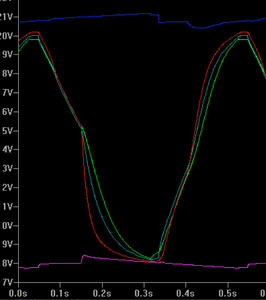Modeling and simulation are key elements when new systems are developed. It helps understanding the properties and behavior of complex systems before really setting up anything and can save a lot of money. Especially in low temperature physics where contradicting requirements are common, an understanding and quantification of the different effects is necessary to develop an efficient and reliable system.
Modeling and simulation can be a very time consuming task therefore we try to start with rough estimations to identify the places where problems may arise and then start to go to more and more details where needed. Even with extremely powerful computers available in our days it is easy to set up a simulation that exceeds the calculation power of any machine. That’s why it is of paramount interest to simplify the modeling where ever possible and here is the point where our experience helps to do it effectively.
We can model most of the physical properties important in low temperature applications like gas flow with friction, heat exchange down to the mK range, heat conductivities, thermal radiation, thermal expansion, vibrations, stress, cooling powers, heat loads, cool down times, magnetic fields…


